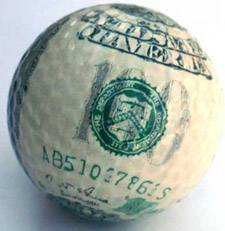After landing in Boston two weeks ago to start my summer internship, I kept my bags packed for Washington D.C. and National Golf Day 2014 on May 21st. While on Capitol Hill, I had the opportunity to attend Congressional meetings, witness American government firsthand and watch lobbyist Brad Steele in action. Oh, and I also got to meet one of golf’s living legends, Jack Nicklaus.
While I wasn’t hanging out with the Golden Bear, I did learn a few things. My key takeaway from the event is that golf is IMPACTFUL in a number of ways.
Economic Impact:
Sure, it’s not surprising that golf has what many might call a “profound” impact on the American economy, but the cash value of the U.S. golf industry has more zeros than a Chicago Cubs box score. Well, that might be an exaggeration, but the fact that nearly 2 million Americans depend on the game of golf to earn a living is simply amazing. What’s even better is that the majority of the folks working in golf aren’t rich course owners or golf course management tycoons; they are the food and beverage directors, clubhouse managers and groundskeepers who work 60+ hours a week to make ends meet.
FACT: In 2011, #GOLF in America was a $68.8 BILLION industry and growing! #WOW #NGD14 @wearegolf pic.twitter.com/BG9CVL4kAr
— Nextgengolf (@nextgolfer) May 19, 2014
- $178.8 Billion: Total economic impact of golf in America including direct, indirect and induced impacts
- $68.8 Billion: Total size of the U.S. golf economy
- $55.6 Billion: Total wage income from American workers in the golf industry
- $20.6 Billion: Total travel expenditures produced by the golf industry
- $5.6 Billion: Total amount spent on golf supplies
- $523 Million: Total spent on golf-related media including books, magazines, DVDs, etc.
- 1.96 Million: Total number of Americans who work in golf
- 15,000: Approximate number of U.S. golf facilities -- more than 10,000 open to the public
- $26: median green fee in the U.S.
***Economic Impact by State***
Charitable Impact:
Again, you might not be surprised that the game of golf generates A LOT of money for charity, but you might not know that in 2011, golf’s charitable impact was $3.9 billion, greater than the MLB, NFL, NBA and NHL combined. During that year, a total of 143,000 charity events were hosted on 12,000 golf facilities across the country raising $26,300 on average!
While some of the money is reinvested into grow-the-game programs, about 95% of all money raised by golf related functions goes outside of the game to organizations such as hospitals, youth development programs and food banks.
In 2011, #GOLF raised more for charity than the @MLB, @nfl, @NBA & @NHL COMBINED! #NGD14 @wearegolf pic.twitter.com/YfryYB3111
— NCCGA (@NCCGA) May 20, 2014
Health Impact:
If you have every played golf on a competitive level, you may have found yourself defending the game from people who claim it’s not a sport. We can put that debate to rest now. Walking one 18-hole round of golf is the equivalent to running over three miles and could burn up to 2,000 calories -- the same as a McDonald’s Big Mac, McDouble, large fries and chocolate shake.
To compare apples to apples, walking one round of golf is more physical activity than a 90 minute game of soccer. An average American man weighing 195 pounds will burn about 1400 calories on the pitch, 30-percent fewer than an 18-hole trek.
If you play one 18-hole round per week, you will walk 260 miles per year - farther than NYC to D.C. #NGD14 @wearegolf pic.twitter.com/HZw3kVXd5s
— Chase M. Russell (@NCCGAPresident) May 21, 2014
Environmental Impact:
When you’re not hitting it straight off the tee, any course can seem big, but the average 18-hole track is over 120 football fields in size. And there’s always that guy in every foursome who uses the “I just want to see the entire course” excuse when he sprays every shot in a different direction, but the nature you find on a golf course can actually be pretty cool.
I’ve often wondered, though, how much water is wasted keeping the course green, but that might surprise you as well. Only 3 out of every 20 courses use municipal water supplies, and 92-percent of facilities are using wetting agents to aid in water retention to maximize the efficiency of their water supply.
ICYMI: #EarthDay was yesterday & we highlighted golf's environmental benefits throughout the day. Info graph: pic.twitter.com/oJDY9UiI4S
— We Are Golf (@wearegolf) April 23, 2014
So maybe people who say golf isn’t a sport are right. It’s more than that.



